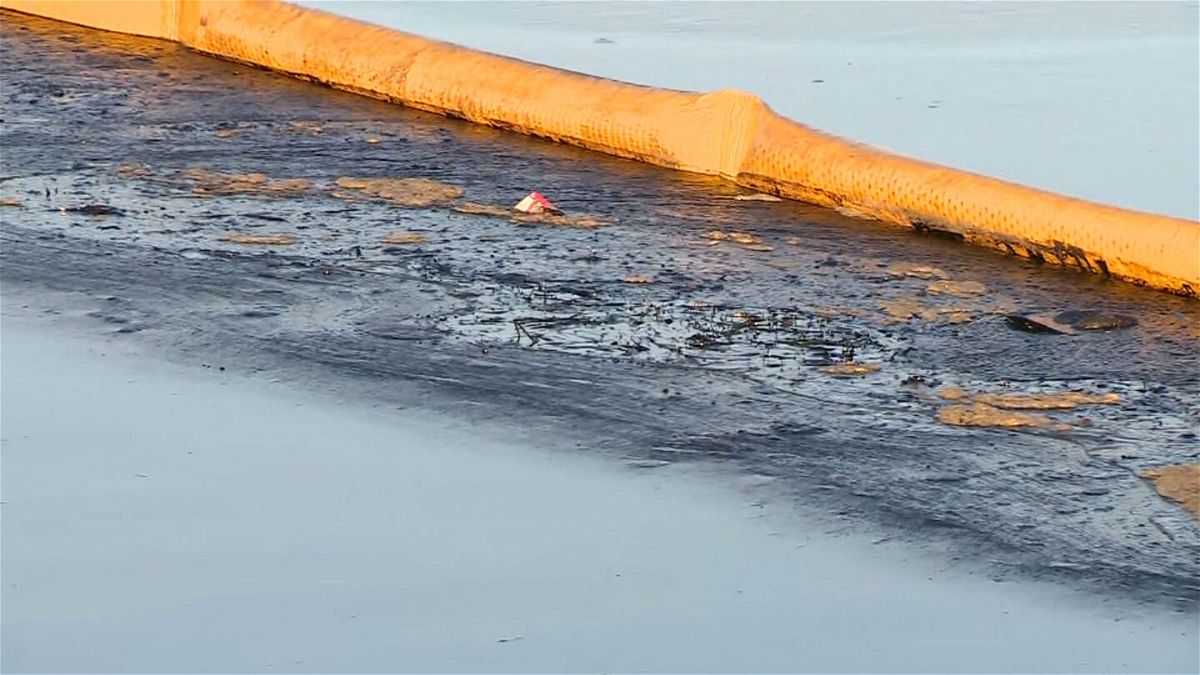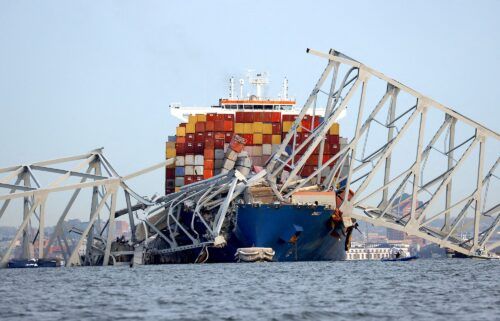The California oil spill is endangering wildlife. Here’s how authorities are trying to clean it up

By Amir Vera, CNN
The pristine beaches and beautiful wildlife in Southern California are now suffering after a weekend oil spill that responders and environmental officials say will take months, if not years, to clean up.
More than 100,000 gallons of oil has spewed into the Pacific Ocean, coating local wildlife habitats, shutting down a swath of popular beaches and potentially harming human health.
Authorities and volunteers from multiple agencies and organizations have been on scene to help prevent the oil’s spread and slow down its ecological impact.
Here’s what’s they’re doing to help clean the Southern California coast.
Top priority is trying to stop the spread of oil
In any oil spill, authorities first have to find the location of the leak, said Miyoko Sakashita, director of the Arizona-based Center for Biological Diversity’s Oceans Program.
“The immediate priority is to contain the oil and try to keep it from getting into more sensitive areas to keep oil away from people,” she told CNN on Monday.
In California, agencies are using booms, which are temporary floating barriers used to contain spills in water, according to the Oil Spill Prevention and Response website.
Booms work because most spilled oil floats on the water’s surface, according to the National Oceanic and Atmospheric Administration’s Office of Response and Restoration.
Some of the responding agencies in California include the US Coast Guard, Bureau of Ocean Energy Management (BOEM), Bureau of Safety and Environmental Enforcement (BSEE), the federal and state Environmental Protection Agency as well as local wildlife groups, Sakashita said.
“We have a fleet of boats out there that are using containment boom to isolate that oil and collect it in what we call skimmers,” said Capt. Rebecca Ore, port and commanding officer with the USCG Long Beach, said Monday.
Skimmers can be a variety of mechanical equipment used to remove oil from the water, the Oil Spill Prevention and Response website said.
Then the priority is stopping human and animal contact with oil
Once the oil has been scooped from sand, taken out of water or taken off of animal fur and feathers, it has to be disposed of as hazardous waste and is taken to special disposal facilities, Sakashita said.
Protecting human life, marine life and land animals is the next priority, she said.
Trained professionals — with protective gear — have been scooping oil on the beach to prevent contact with humans and wildlife, she said.
Four birds have already been treated as a result of the oil spill. One of those birds, a pelican, already had to be euthanized because of a wing injury, according to Lt. Christian Corbo with the California Office of Spill Prevention and Response.
The spill can lead to oil off the coastline showing up as “tar balls,” or sticky oil that gets caught in the sand as it starts to come ashore, Ore said.
There are currently teams deployed at seven “locally sensitive sites” in Southern California, including Bolsa Chica Ecological Reserve, Upper Newport Bay Nature Reserve and Talbert Marsh, Corbo said.
To prevent further contamination, a fisheries closure has been issued for a stretch of beaches that is about 20 miles long, Corbo said.
“The closure basically prevents and prohibits the (taking) of any fish within those waters,” he said.
Looking later at the long-term damage
The impacts of an oil spill can last generations, Sakashita said.
“The Exxon Valdez oil spill in Alaska in ’89 — they were still seeing tarballs on the beaches 25 years later and fisheries that still haven’t recovered after that time,” she said.
And cleanup for the Plains All American Pipeline spill near Santa Barbara, California, in 2015, which released about the same amount of oil as the current spill, continued for several months after the event because oil kept showing up in new spots on beaches, Sakashita said.
“One big lesson about oil spills is that they’re really actually impossible to clean up,” Sakashita said.
The current cleanup for the spill in California could last several weeks or months, she said.
“Right now, wildlife officials have noted there’s a very high presence of whales off of Southern California and so we have extreme concerns that whales are swimming through these oiled waters and breathing in the vapors, which could be harming them,” she said.
Bill Weir, CNN’s chief climate correspondent, said Monday the area of main concern is Talbert Marsh, a 25-acre multipurpose trail that local shareholders, land trusts and even the Army Corps of Engineers have spent years trying to protect. All that work for the “little slice of life,” as Weir called it, was destroyed in a single day.
“These sorts of leaks happen all the time, all over the world,” Weir said. “The only reason this one is so newsworthy is where it’s happening in some of the most popular beaches in southern California, in the wealthy communities of Orange County.”
Ore said the Coast Guard and other agencies are trying to protect the beaches and pick up as much oil as they can.
“I know these beaches are incredibly important, not just to the residents and citizens of Southern California, but to much of the country,” she said. “We are doing everything we possibly can to address this situation.”
The-CNN-Wire
™ & © 2021 Cable News Network, Inc., a WarnerMedia Company. All rights reserved.



